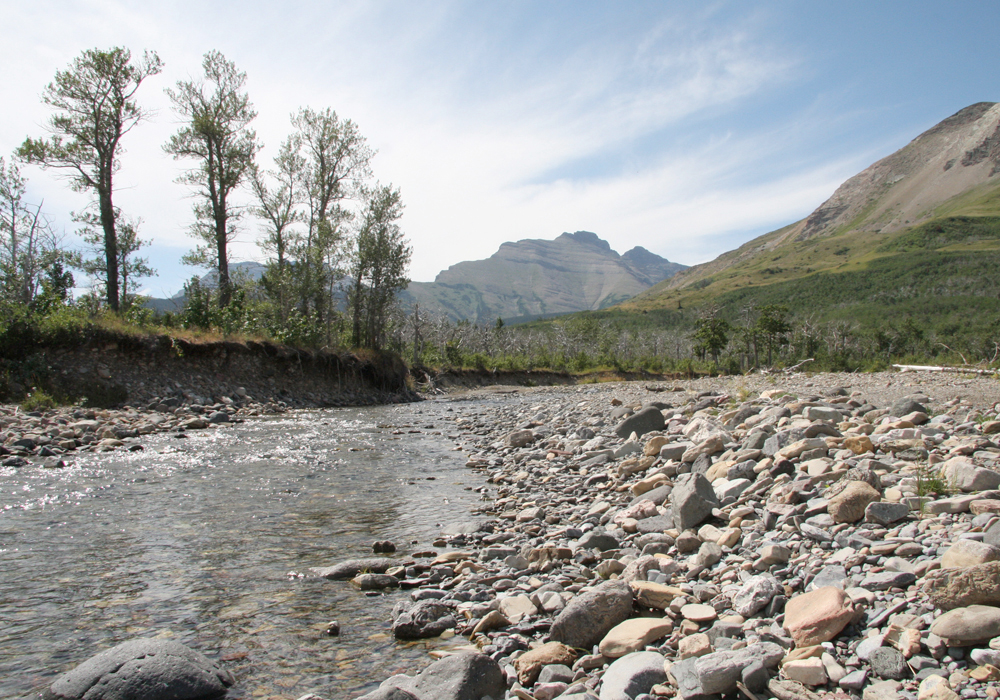Growers will need to decide whether to use upcoming efficiency gains to expand acres or protect their existing capacity
Late August rains in parts of southern Alberta are providing relief but river levels remain far below historical averages.
That has caused irrigation districts to post early shut-off notices.
Flow rates for the Oldman and Bow rivers, which converge to form the South Saskatchewan just upstream from Medicine Hat, have been stifled all season as a sudden spring heat wave saw mountain headwaters melt quickly while precipitation remained elusive all season.
The region’s three largest irrigation districts — the St. Mary’s, Bow River and Eastern — have posted shut-off notices for around the end of September, one to two weeks earlier than normal.
Read Also

Soybean market still figuring out implications of China-U.S. pact
Soybean futures had a muted reaction to the U.S. trade deal with China as the market tries to figure out the nuances of the deal.
Richard Phillips, general manager of the Bow River Irrigation District, said the system rose to the challenges it faced this season.
“Since 2001, we’ve added 84,000 acres to our expansion limit, approximately 70,000 are being irrigated below Little Bow Reservoir this year. Yet, Little Bow diversion will be significantly lower than 2001 in a year with very similar precipitation,” said Phillips, backing up the idea that efficiencies have boosted the district’s ability to squeeze more out of an acre foot of water.
Across southern Alberta, Philips said in the last 50 years, districts have doubled acres under irrigation without using more water from the rivers.
This year, many irrigators faced decisions about which crops to irrigate because allotments to farmers were lower than normal for much of the season in most districts.
A sudden but short-lived water allotment reduction at the Eastern Irrigation District in June saw farmers dealing with tightened supply levels not seen in decades and forced the city of Brooks to implement temporary municipal water restrictions.
Calgary started mandatory water-use restrictions in August due to low river levels, while Lethbridge and Medicine Hat have issued voluntary advisories for household uses as the province raised its river drought indicator to its second highest level. Water conservation and in-stream objective levels have also struggled to be met and have triggered some restrictions to water licence holders along southern Alberta rivers.
BRID has weathered the conditions better than most. Phillips said the district has supplied its irrigators with near normal water allotments consistently throughout the season.
“Our reservoirs are still in really quite good shape. We’re below average for this time of year but we’re basically holding them steady the last couple of weeks,” said Phillips. “Total storage in our district is about 70 percent of full right now, so really not a bad spot to be in at the very end of August in a year of extreme drought.”
This year is ranked as the district’s fourth highest water use, coming behind 1988, 2000 and 2001, which placed the highest demand on BRID’s system.
Phillips said the combination of low precipitation and river levels is similar to the situation faced by BRID irrigators in 2001. It represents the most challenging conditions faced by districts across the region since then.
With nearly $1 billion being invested in irrigation projects to convert open canals to pipelines and expanding some reservoir capacity, irrigators must decide whether to use the efficiency gains from those projects to expand acres or to improve drought protection.
“As we continue to complete projects that will save water, the decision everybody will have to make individually for their districts is do you use that saved water to improve your water security in a year like this one where some districts clearly would benefit from greater water security,” said Phillips. “Or do you use it to expand?”
The provincial irrigation modernization program has been advertised by the Alberta government as having potential to increase irrigated acres in the southern portion of the province by 230,000 acres.
That would increase the provincial total by 15 percent with the province’s 10 irrigation districts currently providing nearly 1.5 million acres of land under pivots.
















